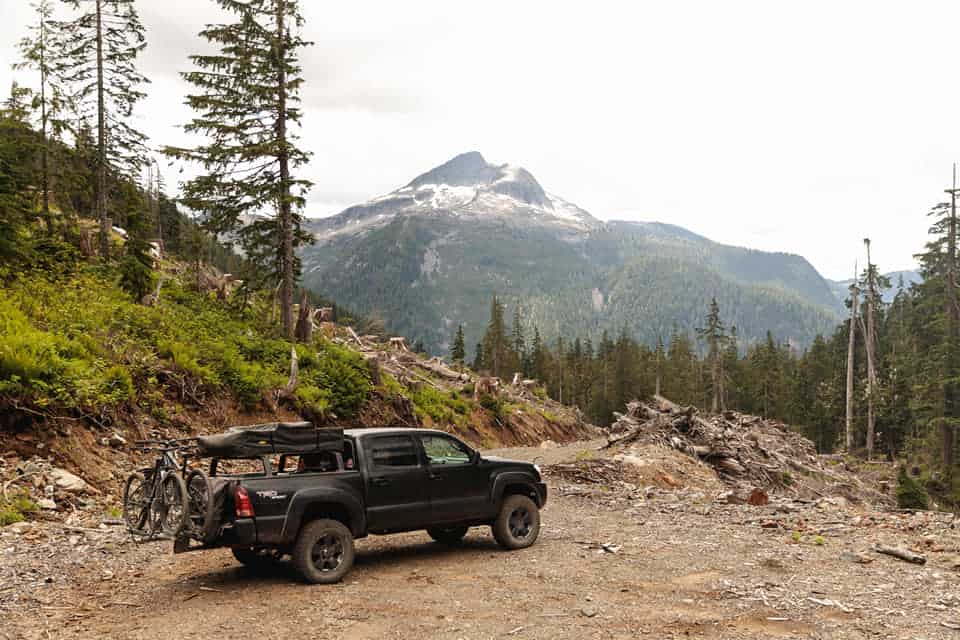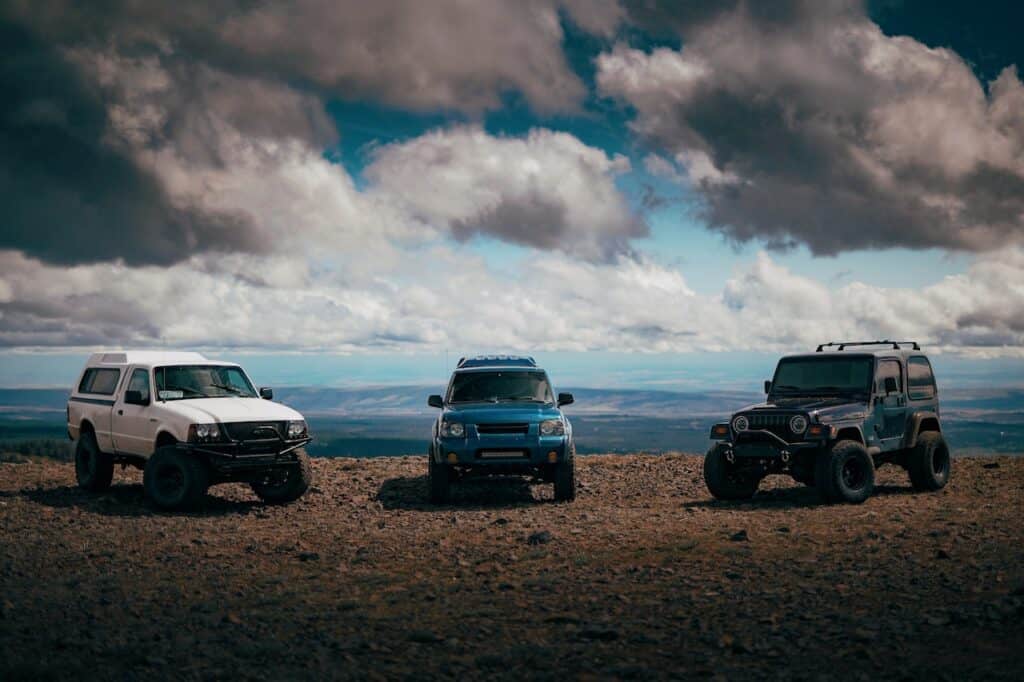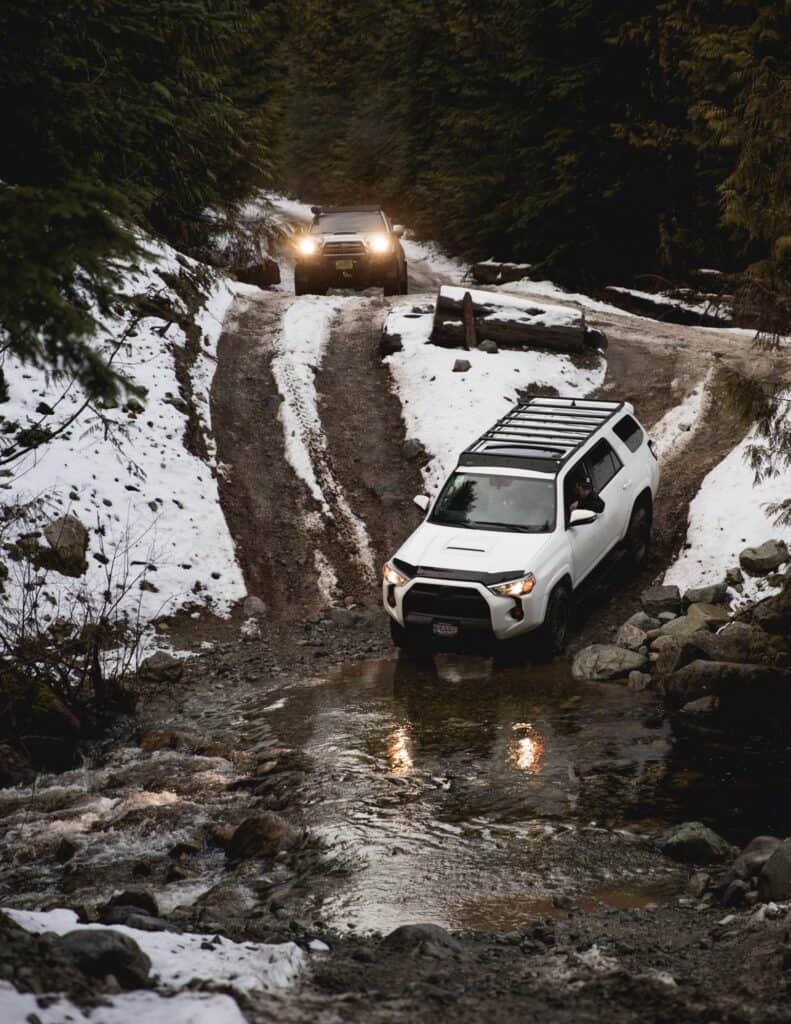We have all seen the photo – a truck parked on a gravel road high up in the mountains of Colorado, or maybe even down in a massive canyon, like the ones found in Moab. The dream of being there, far away from everybody makes you excited! Your vehicle is a two wheel drive (2WD) though… is that sufficient?
As a general rule, four wheel drive (4WD) is recommended when heading off-road. However, it absolutely is not necessary. There are many factors that come into play when taking a vehicle off-road. The most important thing to keep in mind before heading into the backcountry is – know before you go.
Below we will cover what truly matters when taking your car or truck off-road, and explain – why not having 4WD shouldn’t stop you from getting out and exploring!

Is Two Wheel Drive (2wd) Safe Off-Road?
The simple answer is, absolutely! The more accurate answer is, it really depends. As stated above, before heading out into the backcountry, whether this is in a vehicle (2WD or 4WD) or solely with your own two feet, know before you go. This cannot be emphasized enough. The backcountry is a wonderful place, that can help clear the head from the hustle and bustle of everyday life, and can provide you with epic adventures. However, there can be a fine line between epic adventure and “uh oh spaghetti-oh!”
Before heading down that super epic forest service road, or the two track that disappears into the trees, do as much research as you can on the area, and know what sort of conditions you may face. A road may look totally inviting at the beginning, but may turn into a slewy, rutted out mess, right around the next corner. To the original question, is 2 wheel drive safe off-road – just because the road might turn into a slewy, rutted out mess, right around the next corner, doesn’t mean you should’t take your 2WD vehicle up there! It just means that you need to be extra prepared.
In the States and Canada there are endless amounts of public land accesses, and forest service roads (FSRs). Majority of these roads are rough gravel roads, many of them covered in potholes if they are in a region that receives a lot of rain. 2WD vehicles for the most part can easily drive down these roads. The key is, drive to your vehicles ability, and not above your comfort level. When encountering potholes, drive through them slowly, and try not to break hard while in them. This compresses your suspension, which in turn means less wheel travel and a much more jarring experience. Your chiropractor will love you! If the road begins to degrade, and you feel your palms getting sweaty even though it’s only 7 degrees (Celsius) outside, turn around. The road isn’t going anywhere. You can always come back when your driving comfort level has increased, or when you have a vehicle that is more suited for the conditions.
“…there can be a fine line between epic adventure and ‘uh oh spaghetti-oh!'”
How Four Wheel Drive Works VS Two Wheel Drive
Now that we have determined that 2WD is safe for taking off-road, let’s go over the main differences of a 2WD and a 4WD vehicle.
A two wheel drive vehicle has a fairly simple system. When you press your gas pedal, power is given to either the front two wheels or rear two wheels. Which wheels receive power depends on whether the vehicle is a front wheel drive or rear wheel drive. If you aren’t sure whether your vehicle is front (fwd) or rear wheel drive (rwd), a general rule of thumb is – if it’s a car or cross-over, it is front wheel drive. If it is a full size SUV or a truck, it is most likely rear wheel drive. Keep in mind, this is a general rule, be sure to consult your owners manual, or do a Google search on your specific vehicle.
Understanding how four wheel drive works is also fairly straight forward. There are just a couple extra moving parts. Much like a 2WD vehicle, when you press on the accelerator pedal, power is given to the rear two wheels (we will assume the 4WD vehicle is a RWD primary truck). However, with a 4WD you then have the option of switching from 2WD into 4WD. When you put your vehicle into 4WD (consult your owners manual on how to do this), you are connecting the rear drive shaft with the front drive shaft, this in turn engages the front differential which is not active in 2WD. Once 4WD is engaged and both differentials are active, power is then being given to all four wheels.
What Tires Should You Have For Off-Roading?
It is recommended, that when you are going off-road in your vehicle, you have either All Terrain (A/T) tires, or Mud Terrain (M/T) tires. The type of tires you have are even more important when you are planning to go off-road with a 2wd vehicle.
If you were to take a lifted 4wd Jeep with racing slick tires, or a 2wd Honda Civic with All Terrain tires, and placed them both on a slick, muddy surface, the Civic would most likely have much more control than the Jeep. Even though the Jeep is a 4×4, it still needs to have decent tires to grip in the mud. Otherwise, it may be spinning all four tires and going nowhere fast. The Civic on the other hand, assuming the mud wasn’t too deep, having All Terrain tires would allow it to claw its way through the mud to victory.
All terrain tires are a more aggressive version of your average street tire. They are meant to be the best of both worlds. Quiet and smooth on the road, but strong and grippy off-road. They are often rated for driving in the snow as well.
Mud terrain tires are the even more aggressive version of the all terrain tire. Their main focus is off-road performance. Knobby tread patterns, thick sidewalls, and harder rubber, makes them the go to choice for many serious 4x4ers. While they are great off pavement, they have their drawbacks when it comes to driving on pavement. They are often louder than an A/T, not nearly as smooth, and in the rain and snow they can have less grip due to their harder rubber compound.
When it comes to choosing a tire for your vehicle, you must consider what your average driving conditions are like. For most people who occasionally go off-road, but do a lot of pavement driving, an A/T would most likely be the best fit for them.

Is Stacking Rocks Okay When Off-Roading?
Stacking rocks to get through an obstacle, is 100% okay. However, it is frowned upon by many serious four wheel drive enthusiasts. The reason for this is, many people spend thousands, even tens or hundreds of thousands of dollars to build their vehicle into an extremely capable off-roading machine, that they want to be able to push and test its limits. When people stack rocks or logs, this can make a trail or obstacle much easier.
When driving in a 2wd vehicle off-road, you may come to a section of road where your vehicle is struggling a bit to get up it. This is where proper line choice, and potentially stacking rocks may come into play.
Before filling in the obstacle with rocks for logs, have a look at the section of road or trail and see if there is an alternate line you could attempt to go up. Our natural instinct is to go right up the middle. This is often not the correct line choice. Look for a section that will provide your vehicle with the most grip possible. Whether that be, the driest dirt/rock, or the least rutted out. When you are in a 2wd vehicle, you want to make sure that the two wheels receiving power, remain on the ground the entire time. Once a tire lifts, you may lose all momentum. This is where stacking a few rocks in a rut may assist you, and keep you moving forward on your adventure.
If you do fill a rut with rocks or logs, please be sure to remove them once you are through. This allows the next person through to enjoy the challenge of problem solving the trail.
